Musculoskeletal manifestations of sarcoidosis occur in ~20% (range 4-38%) of patients with sarcoidosis and include joint involvement, bone lesions, and muscular disease. Approximately 25% of patients with sarcoidosis have associated arthropathy.
Pathology
-
joints: joint involvement in sarcoidosis
radiographically identifiable pathology is rare
can be acute occurring isolated or as part of the Löfgren syndrome
less commonly, chronic arthritis presenting as non-deforming granulomatous synovitis or deforming non-erosive arthritis (Jaccoud arthropathy)
dactylitis and/or tenosynovitis
commonest joints to be involved are the ankles, knees, elbows, and phalanges of the hands and feet
joint space narrowing is unusual
-
muscles: muscle involvement in sarcoidosis
muscles involvement occurs around 50-80%, but is symptomatic in only 0.5-2.5%, mostly when the diaphragm or extraocular muscles are involved
can be chronic proximal myopathy or less commonly acute mimicking polymyositis
nodular pattern myopathy manifest as single or multiple painful nodules
-
bones: skeletal sarcoidosis
-
hands are mainly affected
changes seen in the middle and distal phalanges tend to be more advanced than those in the proximal phalanges and metacarpal bones
lace-like reticular pattern of bone destruction of the metaphysis, without associated periosteal reaction
cystic bone lesions with well-defined margins and lytic bone lesions with periosteal reaction
cortical remodeling of the phalanges, in which the concave shaft is converted into a tubular structure
sclerotic bone lesions
-


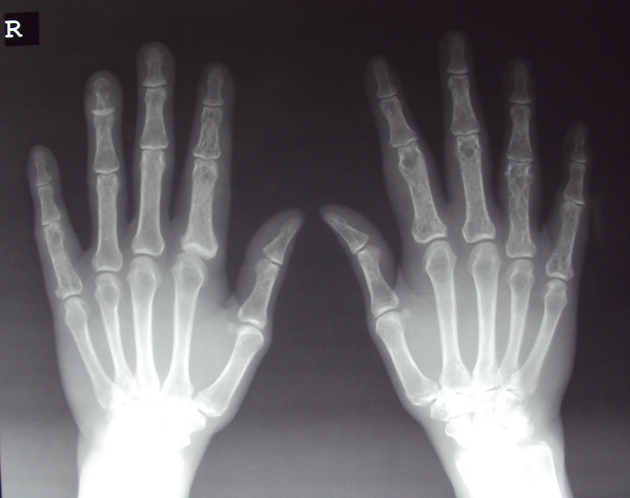
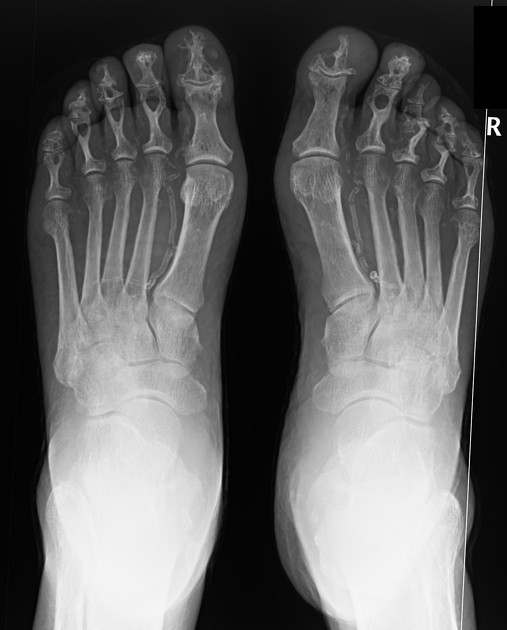
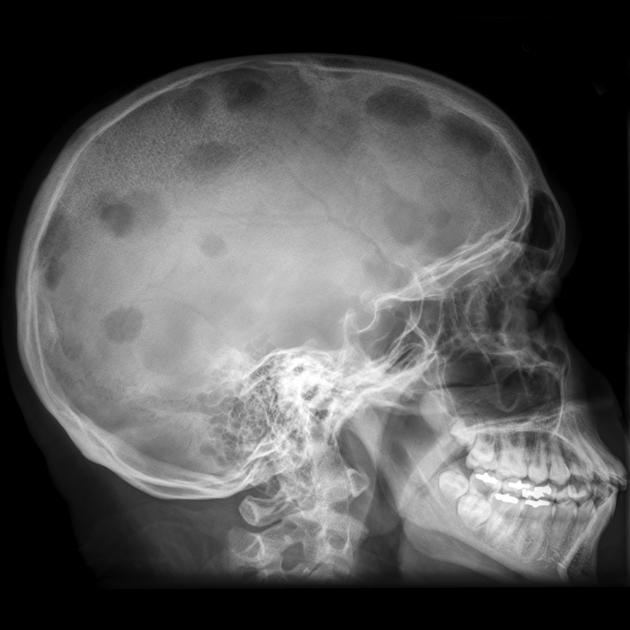
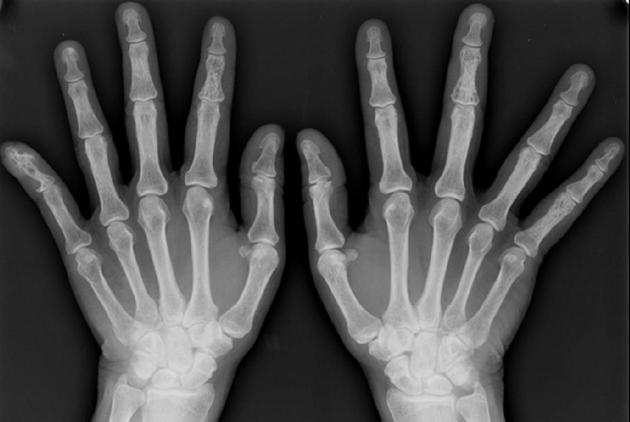
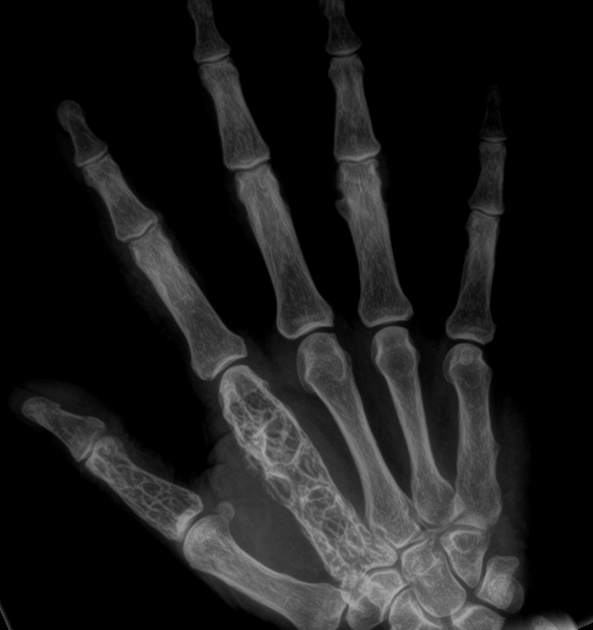


 Unable to process the form. Check for errors and try again.
Unable to process the form. Check for errors and try again.